Introduction
One May 2025, A British parliamentary hearing revealed that the “Allied maritime command” (March), One of the key military bases of NATO, incur a "risk of paralysis" because of its high dependence on transocian submarine cables, likely to be targeted by coordinated enemy attacks. This warning highlights the deep dependence of our modern societies with regard to submarine cable infrastructure-these optical fiber networks placed at the bottom of the oceans, who ensure not only 95 % Global trafficking in international data, But which are also at the heart of military communications, global financial transactions and internet.
This article offers an in-depth analysis of these underwater cables, by exploring their technical functioning, their strategic value, the threats to which they are exposed, as well as the protection measures implemented - in order to understand why they are today one of the most vulnerable critical infrastructures in the world.
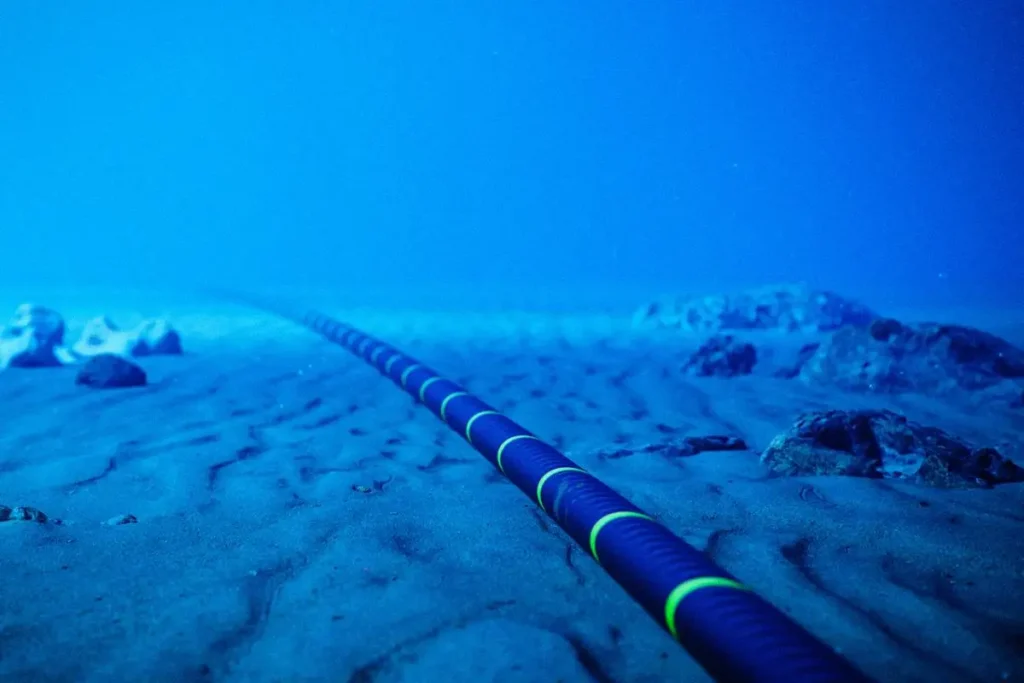
Submarine cables : From ocean telegraph to the "nervous network" of the digital age
1.1 Definition and historical evolution
Submarine cables are data transmission or electricity lines placed at the bottom of the seas. Their story dates back to 1850, with the commissioning of the first telegraph cable crossing the Channel. At the end of the 19th century, Transatlantic cables have enabled real -time communications between Europe and America. In 1988, The firstness of the first submarine cable with transatlantic optical fibers (TAT-8) marked the entry into the era of high -speed data transmission. Today, the total length of the underwater optical fiber cables exceeds 1,4 million kilometers, either what to do 35 times the turn of the earth, Thus forming the invisible internet framework.
1.2 Structure : multilayer protection against extreme environments
A typical submarine cable is composed, from the inside to the outside, following elements :
Heart : glass fiber beams, Transmitting the data by light signal ; A single fiber can withstand dozens of terabits per second (TBPS) bandwidth ;
Protective layers : an insulating sheath in polyethylene against corrosion, A steel wire reinforcement to resist the traction of fishing chalt and friction of sea rocks ; deep water cables must also bear a pressure of 600 bars, either the equivalent of 600 kg par cm² ;
Auxiliary systems : repeaters, installed all 50 has 100 km, Amplify the signal ; An integrated copper wire provides a continuous power supply of several thousand volts for these repeaters.
In coastal areas, cables are more armored due to human risks (anchoring, fishing), while on the high seas, They are often buried and lighterly protected to reduce costs.
1.3 Classification : The "double path" underwater of communications and energy
Communication cables : They transport internet data, telephone, Visioconferences, etc. For example, The Sea-Me-We cable 3 connecting Europe to Asia offers a capacity to 960 Gbps, sufficient to simultaneously transmit millions of high definition video flows ;
Electrical cables : They carry out the transport of electricity between countries, Like the Cross Channel cable between the United Kingdom and France, capable of transferring to 2 GW, either 5 % of the energy demand of the two countries ;
Special uses : Military cables have encrypted transmission capacities ; Underwater observation network cables feed the measurement instruments and transmit the data in real time.
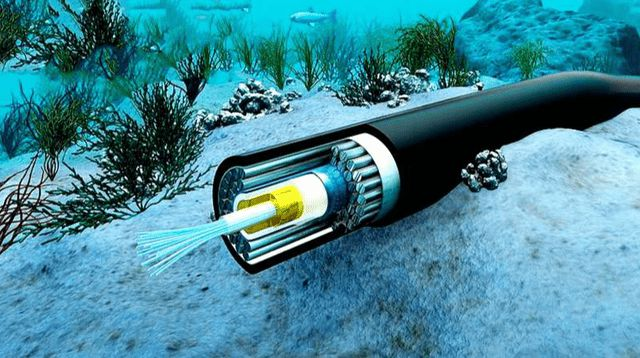
Submarine cables : the "digital vital flow" of globalization
2.1 Data transmission : The "underwater highway" faster than satellites
Submarine cables by far surpass satellite communications in several dimensions :
Speed and latency : Light travels in optical fibers about 200 000 km/s, allowing a transatlantic latency of barely 60 milliseconds. On the other hand, satellite communications must travel until 36 000 km to geostationary orbit, causing more than 500 ms, incompatible with uses such as high frequency trading (which requires latency lower than 1 ms) ;
Capacity and stability : only one fiber optic cable can transport until 160 Data TBPS (For example, the sea), either the equivalent of 71 millions of high definition films transmitted simultaneously. Unlike satellites, These cables are not undergoing ionospheric disturbances or solar storms, while the bandwidth of a typical satellite does not exceed 20 GBPS and remains vulnerable to space debris.
2.2 Military strategy : The "vital line" of modern operations
Allied maritime command (March) NATO is interconnected at the command center in Europe and at the naval base of Norfolk (UNITED STATES) via underwater cables, allowing real -time transmission of tactical orders, radar data and drone images. A break in these cables would plunge the Allied fleets into chaos, making any coordination impossible and increasing the risk of errors in missile systems due to transmission delays. During the incident of 2023 in the Baltic Sea, Or 11 cables were damaged, NATO had to resort to satellite relief links, But the bandwidth fell from 70 %, revealing strong dependence on underwater cables.
2.3 Economy and finance : the "nervous system" of the global markets
The New York-London financial corridor deals with tens of thousands of exchange transactions every second, requiring an ultra-fast transmission provided by the underwater cables. In 2016, An earthquake in Taiwan has damaged several optical cables, leading to delays more than 3 seconds on Asian markets and estimated losses 1,2 billion dollars in one day. What's more, Cloud giants (Like AWS or Google Cloud) connect their intercontinental data centers to 98 % via underwater cables, guaranteeing users fluid access to servers located in Tokyo or Sydney, As if they were local.
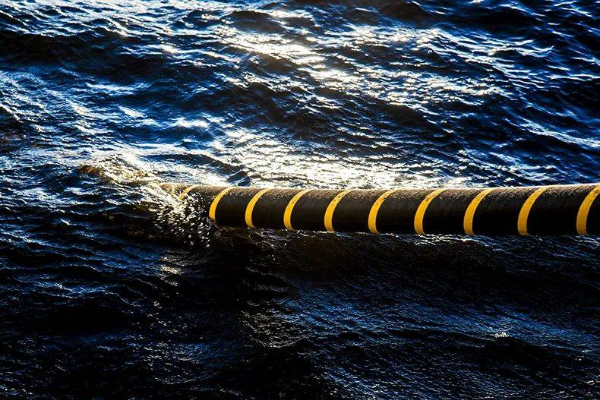
How do submarine cables weave the global network ?
3.1 Cartography : between digital hubs and disconnected islands
Global submarine cable networks are articulated around large hubs such as London, New York, Singapore and Hong Kong, forming three main axes :
Transatlantic : connecting Europe and North America, with emblematic cables commen tat-14 I amrea, These connections ensure near 40 % global financial traffic ;
Transpacific : connecting Asia to North America, Cables such as APCN-2 or CUCN support the exponential growth of Internet traffic in the Asia-Pacific region ;
Eurasie-Africa : The Sea-Me-We cable 5 stands Singapore to France crossing more than 20 pays, constituting a major digital pillar of the initiative of new silk routes.
However, Some regions remain marginalized : Africa and the South Pacific Islands suffer from limited coverage. For example, Fiji depend on a single cable to connect to the global network ; in 2024, An accidental rupture due to work caused a national internet breakdown of 36 hours, illustrating their vulnerability.
3.2 Installation and maintenance : a "precision surgery" in the great funds
Preliminary studies : Telected submarine vehicles (ROV) map the seabed to avoid ocean flaws, Submarine volcanoes or intensive fishing areas ;
Cable installation : cabliers ships 10 000 tons, Like the Nexus, deploy the cables at a speed of 0,5 node. Shallow, underwater plows bury the cables to 2 meters deep ; on the high seas, They are placed directly on the ocean floor ;
Complex repair : A breakdown is located via optical reflectometry (OTDR), Then a ROV sends the damaged part. The cable has risen to the surface, repaired then redeployed. Each intervention lasts between 3 et 7 days, for a total cost of up to several million dollars.
During a repair operation in the North Sea in 2023, The presence of the Russian ship Yantar near the Panne site has raised suspicion of sabotage, fueling geopolitical worries around the safety of submarine cables.
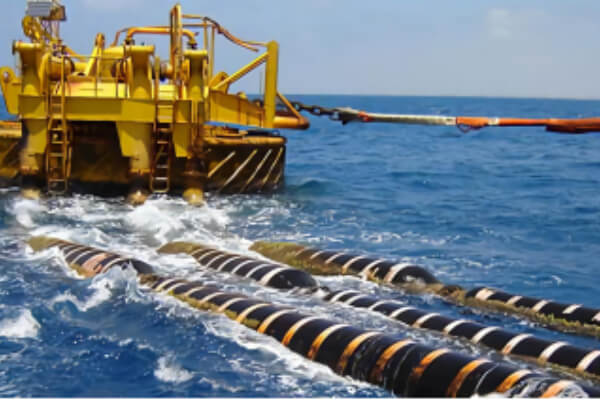
Why have submarine cables become the "geopolitical weakness" of the world ?
4.1 Military vulnerability : The "Achilles heel" of NATO bases
The Marcom base in the United Kingdom depends on three submarine cables to ensure its connection with the American command. L’ amiral John Aitkeen, today retired, warn :
"A coordinated attack could cut 90 % Communication channels. Rescue systems take several hours to deploy, with a reduced capacity for two thirds. »
During the Russian-Ukrainian conflict in 2022, Several cables in the Black Sea have been approached by unidentified submersibles. NATO must have urgently activated high -frequency radio links, revealing the fragility of his tactical communications.
4.2 Cyber attack : cable as "physical entry point"
Saborate an underwater cable can be used as a prelude to a large-scale cyber attack. In 2019, A state has cut a cable in the Persian Gulf, Then launched a DDOS attack (Disputed Department of Service) against banks from the Middle East, paralyzing the financial network during 12 hours.
This hybrid tactic - physical rupture followed by a logical assault - becomes a typical weapon of modern hybrid wars, blurring the boundaries between sabotage, Espionage and digital war.
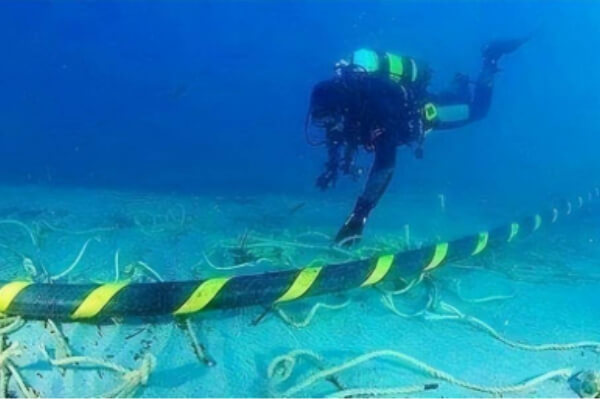
Cascade effects of a cable cut : From internet failure to economic earthquake
5.1 Communications paralysis : A regional and global domino effect
In 2006, An earthquake in Taiwan has cut six transpacific cables, reducing 40 % Internet speed in Asia. Giants like Tencent and Alibaba saw their international activities strongly disrupted, with losses estimated at 3 billions of dollars.
Even more worrying, Military bases may lose control of drones or submarines in the event of a connection rupture : in 2018, A French navy reported the disappearance of three drones following an underwater cable failure.
5.2 Economic shock : losses in billions in a few minutes
High frequency trading is based on latencies of the order of microsecond. A cable break can cause price interpretation errors, causing high market fluctuations. In 2015, A cable failure in the Mediterranean vary the price of copper of more than 5 % In ten minutes on the London metal stock exchange, either 20 billions of dollars exchanged.
E-commerce giants lose approximately 15 million dollars per hour of breakdown, while an interruption of the airline reservation system can cause tens of thousands of cancellations of tickets.
5.3 Limits of emergency systems : Redundancy is not a guarantee
Even if the critical cables are doubled by rescue routes (like them 12 Transatlantic parallel lines), A large -scale simultaneous attack can overload these alternative lines. In 2023, When five cables were damaged simultaneously in the Baltic Sea, The Internet bandwidth of the Nordic countries has dropped 60 %, causing widespread slowdowns in Visioconferences and Cloud Services.
This crisis highlighted the limits of redundancy strategies in the face of extreme scenarios.
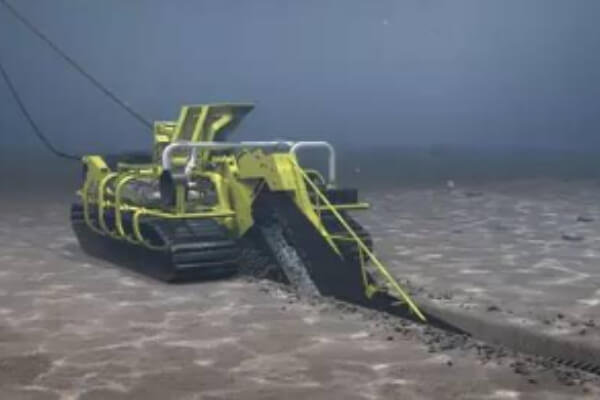
Solutions de protection : technologies, Strategic cooperation and redesign
6.1 Real -time monitoring : to an "underwater alert system"
Sonars and autonomous drones : NATO deploys the Excalibur underwater drone in the North Sea, Equipped with lateral sonar and fiber optic sensors, capable of scanning 100 km² per hour and identify suspect ships and submersibles.
Optical monitoring : By analyzing the variations in the light signal phase, fiber optic technology can detect dredging or cable traction until 50 km de distance, with a location precision of 10 meters.
Satellite-Fond Sail Synergy : Satellites in low orbit, Starlink, offer wide spectrum monitoring. Coupled with underwater sensor data, They constitute an integrated network of surveillance “space-mer-fond”.
6.2 Technological innovations : cables capable of protecting themselves
Intelligent armor : Armored layers carrying pressure sensors and corrosion detection modules make it possible to follow in real time the health of the cable health.
Protection against intrusions : Thanks to "wavele length" technology ", Cables can automatically change the optical channel in the event of a listening attempt, All secured by quantum cryptography.
Autonomous repair robots : Submarine robots piloted by AI capable of welding depth optical fiber are in development. Objective : automate here 2030 The entire cycle "Detection - Reparation - Terification".
6.3 International cooperation : Isolated defense in coordinated defense
Initiative OTAN : The Submarine Shield Program brings together monitoring data 12 national navies, with joint patrols launched in 2024 in the Baltic.
Legal framework : A draft agreement for the protection of underwater infrastructure aims to classify the voluntary destruction of cables as an international crime, authorizing coastal states to secure until 300 naval.
Industrial Alliance : Actors like Google and Microsoft have launched the Sea Cable Security Initiative, A fund of 2 billions of dollars to develop advanced surveillance systems and impose in real time encryption on operators.
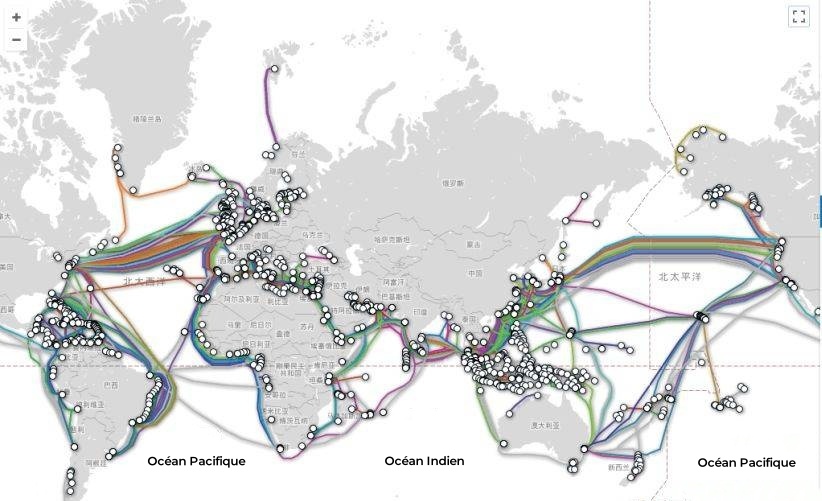
Submarine cables : Refound the future in the digital age
7.1 Explosion : A vital need for digital transformation
With the rise of 5G, of the Internet of Objects and Metals, global data traffic should reach 3,3 ZettaOCTETS per month from here 2030. To cope with it, the capacity of underwater cables will have to grow 25 % per year. Microsoft's “Data Center” project installs servers directly in the cable landing stations, thus reducing the latency and the transmission distance.
7.2 Growing risks : Centralization and vulnerability
Environ 80 % Intercontinental cables go through ten strategic nodes (Like the Strait of Gibraltar or the Strait of Malacca). The failure of a single point can impact several dozen countries. The World Risk Report 2024 classifies the "interruption of underwater cables" among the five main global technological risks, Like the drifts of artificial intelligence.
7.3 Strategic alarm clock : From disinterest in national security
The Strategic Defense British review now classifies the protection of submarine cables as a national critical infrastructure, with a planned investment 5 billions of sterling books to modernize surveillance systems. The Pentagon considers cables as a battlefield at asymmetrical war, and develops a fleet of underwater drones launched from submarines to ensure swarm protection.
Conclusion
Submarine cables are the invisible arteries of digital civilization, bearers of both globalized hopes and silent threats. While we benefit from instant communications, cross -border payments and remote work, A network of optical fibers in deep water discreetly supports this ecosystem.
To meet unprecedented security challenges, You have to build a global shield combining technology, Law and strategy. From innovation to diplomacy, From military defense to citizen awareness, The resilience of the digital future will depend on our ability to balance efficiency and safety.
Because the day when the underwater cables will stop beating, the whole world risks sinking into a digital shock.
